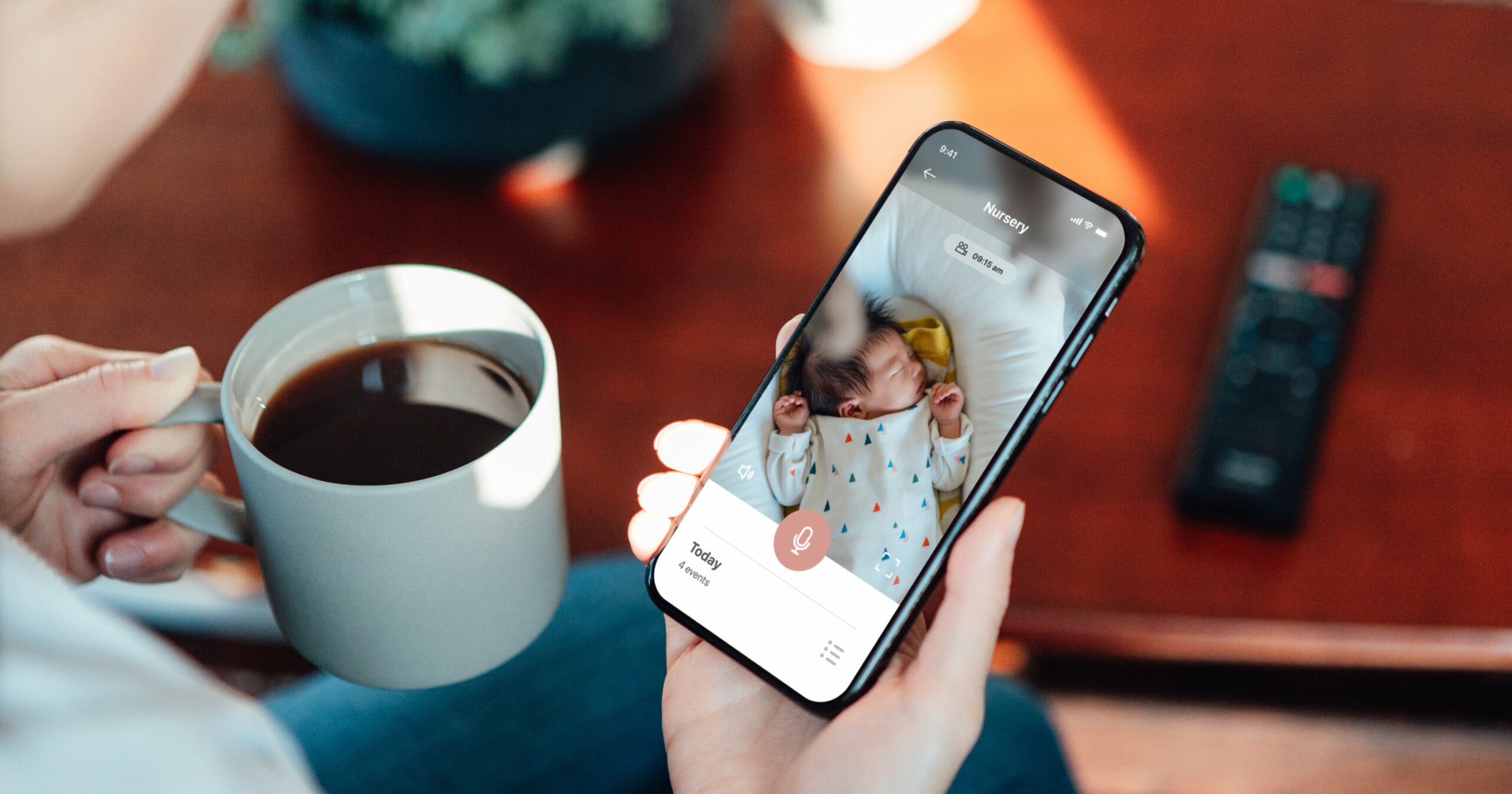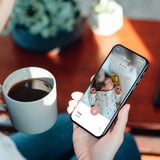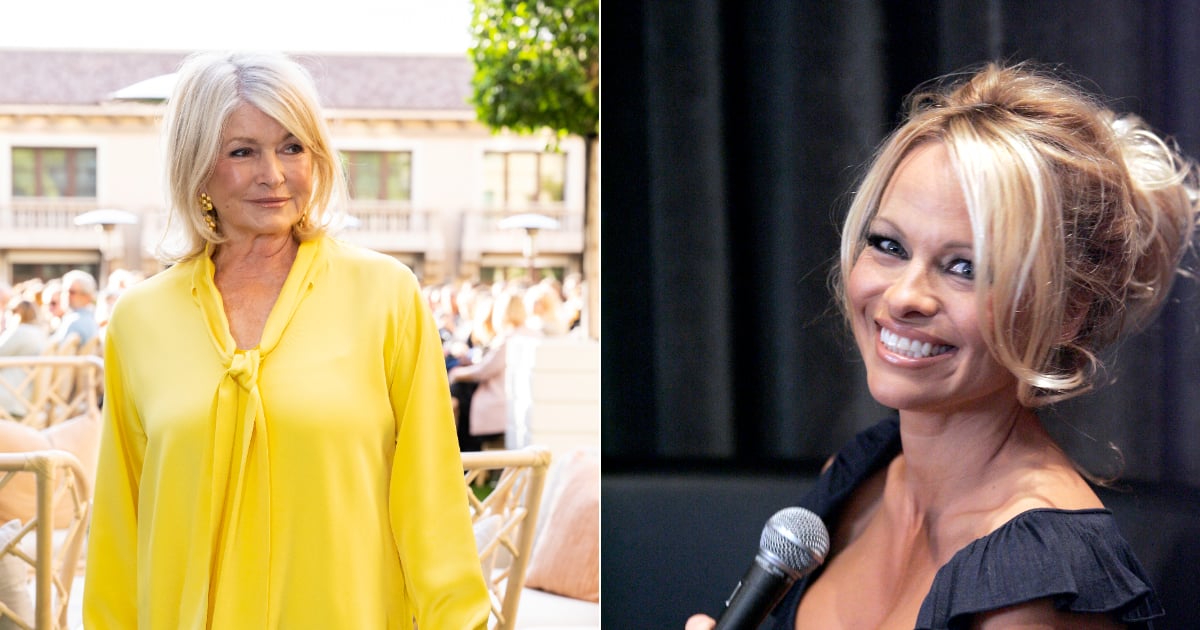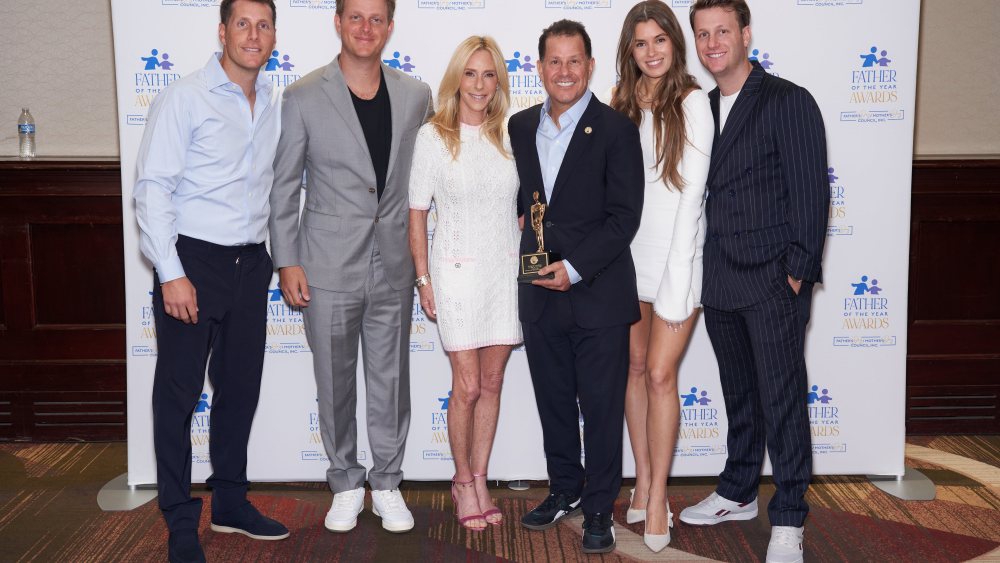It’s an all-too-common scenario for new parents: hovering over the bassinet at 3 a.m., staring intently at your baby’s chest, looking for the reassuring up-and-down motion. Baby monitors have always provided a means by which parents could keep tabs on their little ones – but new high-tech options like the Owlet Dream Sock and Nanit Pro Camera may go a step further, potentially easing new parents’ worries by tracking an infant’s pulse rate, oxygen levels, and/or sleep patterns in real time and delivering the data straight to the parents’ smartphones.
For many, these devices are a godsend. However, other new parents find that such techy monitors further fuel their anxiety by sounding unnecessary or even false alerts or because they feel the need to compulsively check the data from these monitors, and, in turn, compulsively check on their little one.
It raises the question: Are health-tracking baby monitors the solution to parental anxiety, or are they stressing us out even more? Here, we take a closer look at the pros and cons of using high-tech baby monitors and how to determine, in conjunction with your healthcare provider, if they’re right for you and your family.
Experts Featured in This Article
Daniel Combs, MD, is an assistant professor of pediatrics and medicine at the University of Arizona.
Natalie Barnett, PhD, is the vice president of clinical research at Nanit.
Carly Snyder, MD, is a board-certified reproductive and perinatal psychiatrist.
The Potential Benefits of Using Health-Tracking Baby Monitors
The main pro that comes up over and over regarding high-tech monitors is their potential to provide some nervous parents with peace of mind. A monitor keeping tabs on key health markers can almost feel like having a second set of eyes watching your precious little one.
The Owlet Dream Sock (which includes a sensor that is wrapped around the baby’s foot), for instance, is the first over-the-counter medical pulse oximeter for infants to receive clearance from the FDA, meaning the agency has determined that the monitor has the accuracy of a medical-grade device, although the Dream Sock itself isn’t a medical device. The sock is meant to help parents track their child’s wellbeing, both by offering notifications when the baby’s pulse rate or oxygen saturation move outside of a preset safe zone and by allowing parents to monitor their little one’s sleep patterns and duration over time.
Many new parents find the features invaluable. For instance, Sam Foster, the mother of an 18-month-old son, used the Owlet Dream Sock for 11 months. “[My son] had a respiratory virus when he was 6 months old, and he was wearing the Owlet, which was showing his oxygen level at 87 percent,” she tells PS. “Between that and advice from his pediatrician, we decided to take him to [the hospital], and he was admitted and put on oxygen. Without the Owlet, I wouldn’t have known his oxygen was that low, and that he needed treatment.”
(It’s worth noting that spokespeople for the Nanit Pro Camera and Owlet Dream Sock confirm that the products are only intended to be used with healthy infants, not those with preexisting health issues. Owlet also sells a product called the BabySat, an FDA-cleared device that’s available by prescription only and is intended to provide additional monitoring at home to babies who need it, as determined by their healthcare provider.)
Nanit, the makers of another popular high-tech baby monitor, also sell a Breathing Band, as well as a sleep sack and PJs with breathing monitoring tech built it. These products allow the monitor to help track a baby’s breathing motion at night. While the company emphasizes that the feature is only intended to help parents better track their babies’ sleep patterns and is “not intended to diagnose, treat or cure any disease or other condition, including but not limited to, Sudden Infant Death Syndrome (SIDS),” the site also notes that “71% of Nanit parents report feeling less anxious,” and that the app helps you “know when your baby needs you.”
According to a user review of the Nanit Pro Camera posted to Amazon, “It shows when baby wakes up, whether baby was put to bed asleep, time to fall asleep (if they weren’t already asleep), how long baby was out of bed, and when significant sounds were picked up (crying, etc).”
Ultimately, even for parents who haven’t had an experience like Foster’s, a high-tech monitor that closely tracks health markers – beyond simply delivering an audio and/or visual feed – can feel like an extra layer of reassurance, which is a huge benefit for some parents during those early, worry-wracked days and nights.
Why Might Baby Monitors Cause Anxiety in Some Parents?
Modern baby monitors certainly have their advantages. But for some, too much of a good thing can lead to unnecessary stress about their child’s health.
False Alarms
Daniel Combs, MD, assistant professor of pediatrics and medicine at the University of Arizona, points to past research surrounding home monitoring and parental anxiety. “Several studies conducted in the ’90s showed that parents given an apnea alarm at home reported higher levels of stress around parenting,” he says. “Pulse oximeters will often have inaccurate data, and this may trigger an alarm when the baby is perfectly fine. This occurs in both consumer devices and hospital devices.”
Of course, technology has improved since the 90s and 00s. In response to a request for comment from PS, Natalie Barnett, PhD, the vice president of clinical research at Nanit, says that while the Nanit monitor does sometimes give false alarms, in the majority of cases they’re caused by user error – such as the breathing band not being tight enough or a blanket or toys obscuring the pattern. Dr. Barnett acknowledges that false alarms can cause anxiety, and says that in order to avoid them, Nanit gives very clear setup instructions to try to minimize their frequency. “When [parents] follow all the [set-up] steps, the chance of false alarms is very, very minimal,” she says.
Nanit also gives parents the option to report false alarms, which the company then investigates and, once they’ve figured out why the alert happened, emails the person who filed the report to explain the reason.
Dr. Barnett also notes that Nanit isn’t a medical device, and only aims to give “folks peace of mind that we can see breathing motion in their babies,” says Dr. Barnett, who adds that “we feel good about the reliability of the way we’re tracking that breathing motion.”
In response to PS’s request for comment, a spokesperson for Owlet said, “The Owlet Dream Sock is designed to minimize the number of false notifications and it has been clinically proven to have a very low rate of false alarms.” Part of the Dream Sock’s ‘De Novo’ classification process with the FDA required a thorough review, which “included the amount of false alarms which was found to be very low,” the spokesperson said. “With the collaboration with our Medical Advisory Board we have been able to have expert analysis and guidance on our clinical research and assessment of the quality of care we provide.”
Foster, whose Owlet accurately alerted her to her son’s low oxygen saturation levels, claims she did have some false alerts as well. “Two times with red alerts sounding in the middle of the night, waking us up in a panic, only to find out [our son] was sleeping perfectly fine,” she says.
But the Owlet spokesperson noted that “Most times, what parents identify as a ‘false alarm’ is actually a different type of alert.” In addition to Red Notifications (which occur when the baby’s oxygen levels or pulse rate appear to go outside a preset range), the Owlet’s alerts include low-battery warnings, excessive movement notifications (which means the baby’s awake or not sleeping well), and a notification that the Owlet Sensor isn’t communicating with the Base Station.
For some parents, the benefits they experience from these monitors may outweigh the stress caused by additional, or at times false, alerts; for others, they may not.
Unnecessary Worry
For Chelsea S., a Virginia mother of two, monitoring her daughter’s vitals via a high-tech monitor became almost reflexive, even when it wasn’t needed. “You always feel the need to check it, even when you know [your baby is] okay,” she says. After one instance in which the monitor she was using correctly picked up a drop in oxygen levels, which a follow-up visit to the doctor revealed may have been caused by atelectasis, a condition that can cause lunge collapse, she became understandably attached to the monitor. But eventually, Chelsea felt as though the app was becoming a vice – one that she needed to wean herself off of. “It’s hard to be okay with not looking at it. The best way to do it is unplug it and put it away and not have it so readily available.”
Carly Snyder, MD, a board-certified reproductive and perinatal psychiatrist, understands the urge to use this level of monitoring technology. “You go from being pregnant, where you can protect your baby as much as you can, [to caring for] this little person who you want to protect and keep safe,” she says. “If there’s [a device] to help maximize safety, it’s an understandable thing to be drawn to.”
That said, Dr. Snyder says that relying on these devices can cause more harm than good when they’re causing significant added stress. “If [the device] is not necessary, it’s just another reason to get worked up and nervous [about],” she says. And for parents who have had an experience like Chelsea’s, where they’ve felt that a monitor has potentially averted or mitigated a major health event, it can be hard to spot when the cons of the devices begin to outweigh the perceived good.
Dr. Barnett says that at Nanit, “we actually see the opposite. For some parents, I’m sure whatever they use they may end up being more anxious. But overall, we see that our parents are less anxious once they start using our products and not more anxious,” citing the 71 percent stat that’s on their website.
Additionally, a spokesperson for Nanit points out that the monitor allows you to customize the information you’re getting – you can adjust the monitor’s sound sensitivity, for instance – so you can receive as much or as little feedback as feels helpful for you.
Similarly, a spokesperson for Owlet says that their research has shown “that parents who use Owlet have more peace of mind than those who don’t,” citing a 2017 survey of 5,125 parents/caregivers that found Owlet users reported better sleep and reduced anxiety, and a 2022 survey of Owlet users that found that the overwhelming majority of users reported either no change in their baseline anxiety levels, or a reduction in anxiety, due to the sock. “We have designed our devices to be low profile, safe for babies to wear, and accurate so that parents have confidence in their use,” the spokesperson said, via email. “We receive stories from countless parents noting that they would not be able to sleep or have any peace of mind without their Owlet product.”
A False Sense of Security
There’s a common misconception that health-tracking baby monitors can directly prevent SIDS; unfortunately, that isn’t the case. “The available evidence does not support that pulse oximetry or respiratory monitoring at home can reduce the risk of SIDS,” Dr. Combs says.
In fact, many high-tech monitors that can be purchased over the counter, including Nanit and Owlet, are careful to emphasize that they’re not approved or meant to be used for SIDS prevention, or to diagnose or treat any other health issue; they’re also not meant to provide, substitute for, or override actual medical care and advice.
Some experts note, however, that these devices could give parents a false sense of security, and in some cases may make them less inclined to practice safe sleep strategies – which could actually increase the risk of SIDS.
The Nanit was designed to “work best when a baby is in a safe sleeping space,” Dr. Barnett says. The algorithms Nanit uses to track a baby’s motion are designed to work when one baby is placed safely, alone, in a crib space; they won’t work if the baby is co-sleeping with a parent, for instance, says Dr. Barnett. In that way, the product encourages parents to practice safe sleep guidelines. Nanit also sends “tips and recommendations [to users] every week around creating and maintaining a safe sleeping environment and the importance of safe sleep,” Dr. Barnett says.
“Owlet parents are actually more likely to abide by safe sleep practices over non-Owlet users,” a spokesperson for Owlet tells PS. “More than 80 percent of Owlet users indicate they practice safe sleep guidelines, far higher than the national average. It is also Owlet’s firm belief that monitoring of baby’s health readings can provide additional peace of mind and support for parents in keeping their baby safe during sleep. At Owlet, safe sleep is one of our top priorities and our devices do not take away the need for parents to abide by safe sleep practices.”
Some experts have said that baby monitors can be helpful when used in conjunction with American Academy of Pediatrics guidelines for reducing SIDS, including:
- Always placing infants on their backs to sleep
- Never bedsharing due to risks related to accidental suffocation
- Keeping soft items such as loose blankets, toys, stuffed animals, bumpers, and pillows out of the crib or bassinet
In short, an oxygen-monitoring device should never be relied on as the only way of reducing an infant’s risk of SIDS, and one should always consult with their health care practitioner.
So, Do You Need a High-Tech Baby Monitor?
Baby monitors can be helpful as long as parents keep in mind that even the most high-tech devices are not foolproof: it may not catch every single health event, and also “just because it goes off doesn’t mean there’s something wrong,” Dr. Snyder says.
If you’re unsure about whether one of these monitors is right for your family, consult your child’s pediatrician. If your infant has any preexisting health issues or known breathing problems, they may even recommend an oxygen monitoring device – possibly one that requires a prescription. “Oxygen monitoring may make sense for infants with lung problems,” Dr. Combs says. “This is something parents should talk with their doctor about.”
But if you find yourself preoccupied or overwhelmed by anxiety over your child’s wellbeing, especially if they’re healthy, you may want to speak to your doctor, as these can be symptoms of postpartum depression or anxiety. Actions such as compulsively checking your baby monitor or staying awake when your baby is sleeping to monitor their breathing could be signs that your anxiety is disrupting your daily life – and if that’s the case, help is available.
“Remember more than anything that your mood is critically important for baby’s development, attachment style, and bonding,” Dr. Snyder says. “If you’re not sleeping, and [the device] is stoking more anxiety, then your mood will be negatively impacted. You’ll feel more depressed or anxious. That can have negative implications on your baby’s mood as well.”
The bottom line? As with any aspect of your child’s life, the decision to use a high-tech baby monitor is ultimately up to you and your comfort level. There might not necessarily be any harm in using these devices to track your baby’s health, especially if it alleviates anxiety and gets you a better night’s sleep – but if you suspect you’d do better with less information, that’s fine too. A high-tech monitor isn’t a requirement for being an amazing parent.
The information in this article is for informational purposes only and is not intended to serve as medical advice. You should always consult your family’s healthcare professionals regarding matters pertaining to your and your family’s health.
Alex Vance is a freelance health and parenting writer featured in POPSUGAR, Fortune Well, Today.com, BuzzFeed, Parents, Verywell Family, and more. Currently, she writes part-time for baby-tracking app Huckleberry and the health and fitness website Get Healthy U.




